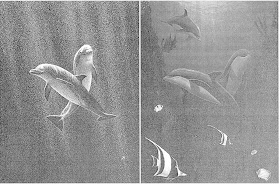Just a short entry today about an interesting new NBER
paper by Bronwyn Hall (Berkeley Economics) and Christian Helmers (Santa Clara Business) (behind a paywall, sorry, though most academics can download for free). The question is what happened to patenting activity when the ability to consolidate patenting in a single super-entity comes into play. Hall and Helmers consider this question in the context of the European Patent Convention, which allowed inventors to file with a single entity (the EPO) that granted patents good in any one of several member countries.
Here's the abstract of what they found:
We analyze the impact of accession to the regional patent system
established by the European Patent Convention (EPC) on 14 countries that
acceded between 2000 and 2008. We look at changes in patenting behavior
by domestic and foreign applicants at the national patent offices and
the European Patent Office (EPO). Our findings suggest a strong change
in patent filing behavior among foreigners seeking patent protection in
the accession states, substituting EPO patents for domestic patents
immediately. However, there is little evidence that accession increased
FDI by patenting foreign companies in accession countries. Moreover,
there is no discernible reaction among domestic entities in terms of
domestic filings, although we do find some evidence that applicants in
accession states increased their propensity to file patents with the EPO
post-accession. Inventor-level information suggests that the underlying
inventions originate in the accession states.
Let's unpack this a little bit. First, for those who were in EPC countries, they continued to file in their home countries
and the EPO at the same rate. It's unclear why - perhaps they wanted the extra chance at protection, or perhaps it was for vanity.
Second, in EPC countries, the rate of invention (measured by patent filings) went up, but only a small amount. But because the rates were pretty low, even a small change was a real change.
Third, foreign patent filing shifted to the EPO almost wholesale. Whereas EPC filers chose both, foreign filers seemed to appreciate the ability to get one patent to cover all countries. The implication I take from this is that EPC filers had some strong reason for that national coverage rather than some worry about overlapping protection if one patent were invalidated.
Finally, the foreign filings did not lead to much increased foreign direct investment. In other words, the EPC appears to have allowed for cost savings for foreigners, cost increases for locals (by their choice, mind you), and not much else. From the discussion in the article, one takeaway from this is that strengthening of IP rights did not necessarily increase foreign investment. It's not clear to me why we would have expected this. While strengthening IP in the way that the EPC did should make it cheaper to obtain protection, it is unclear why companies would move R&D that they already have underway to take advantage of it. After all, they are already happy with the R&D they have; the continued national filings of EPC firms imply this. The cost efficiencies alone should be enough (note also that a single source may be cheaper IP, but it may not be stronger - it may be easier to invalidate a single patent in multiple countries than multiple patents in multiple countries).
That said, if formation of the EPC were grounded on claims that, if only it were easier to get broad protection, everyone would start doing more R&D in, say, Portugal, then those claims were misguided.

